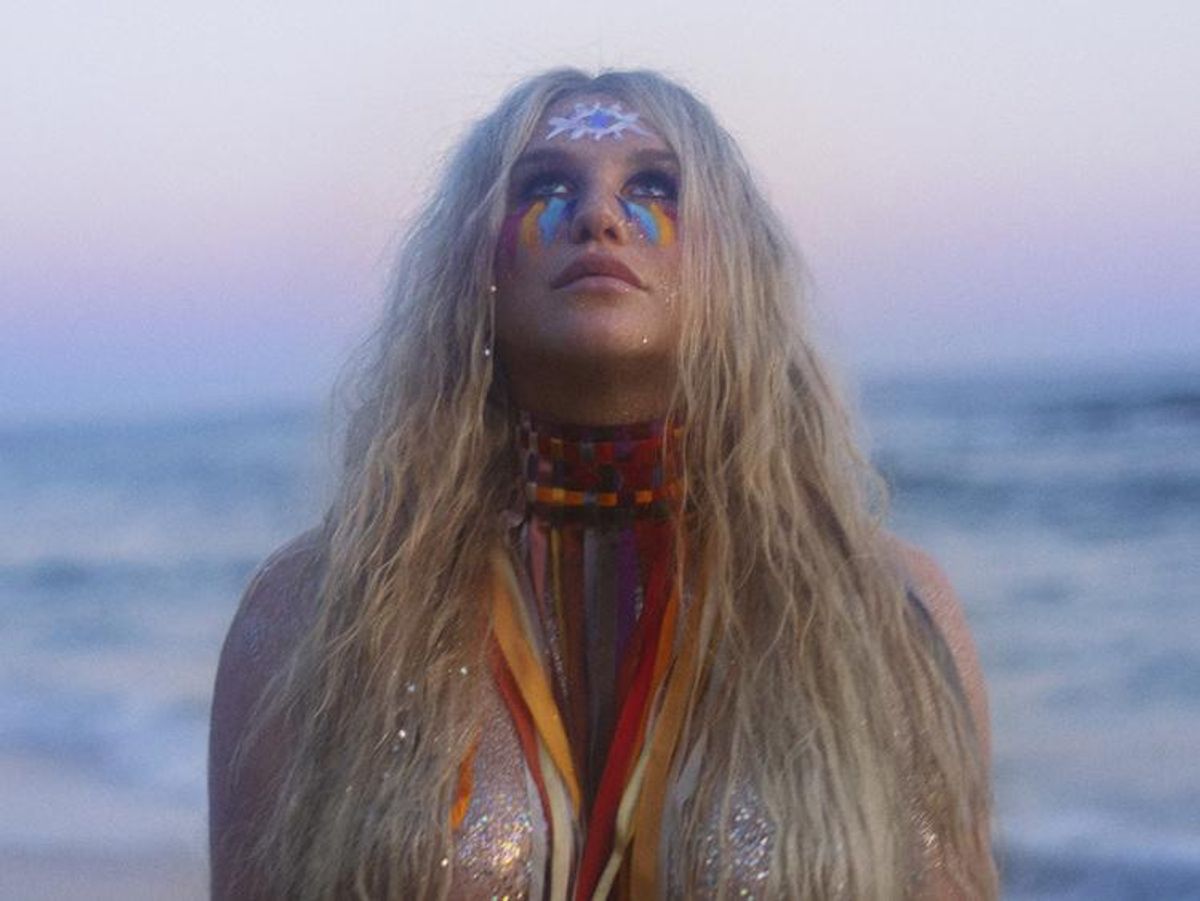Music
Kesha’s ‘Rainbow’ is a Queer Anthem for Self-Realization

Her comeback album's title track speaks to the LGBTQ experience in a direct, colorful way.
August 11 2017 5:17 PM EST
May 31 2023 6:16 PM EST
By continuing to use our site, you agree to our Private Policy and Terms of Use.

Her comeback album's title track speaks to the LGBTQ experience in a direct, colorful way.
When Kesha announced her album would be titled Rainbow, the project's relationship to LGBTQ listeners had already begun taking root. An openly bisexual artist, Kesha has long been an outspoken member of the community, from officiating same-sex weddings to making mainstream music for marginalized misfits with empowering singles like "We R Who We R."
But nothing has been so directly queer as her comeback LP's title track: a piano-led power-ballad that uses the rainbow as a metaphor for self-realization--something she's worked towards and wears today as a visible symbol for strength. The rainbow, for Kesha and so many others, is a destination worth fighting for--a place where inner magic is unleashed and the darkness of self-hate is no longer.
The song's loosely structured like a "coming out" story, opening with Kesha's reflective admission: "I used to live in the darkness/ Dress in black, act so heartless." But her narrative quickly brightens when she switches to the present: "Now I see colors are everything [...] Now I see the magic inside of me." It's a euphoric shift that's relatable for all queers, who, at one point in their life, welcomed the rainbow after years of sexual secrecy.
In a personal essay about the track, Kesha says she wrote "Rainbow" on the floor of her isolating rehab center, where she went to overcome an eating disorder. With her boyfriend Brad's keyboard and "some crappy headphones that were falling apart," she wrote the lyrics as a letter promising herself she would be make a change. This was "the beginning" of Kesha's newly launched journey towards self-love and liberation.
"For the past couple of years, color has been symbolic of hope for me," she writes. "I don't think it is a coincidence that it's also symbolic for the LGBTQ community, a sign of freedom to be yourself and celebrate who you are no matter what anyone else thinks. I have been trying to bring more color into my life because that light brings me more happiness and more joy."
The track's chorus builds like a cinematic climax, as strings soar beneath Kesha's vocals and Ben Folds' production closes with finale so joyful, it could shine light on the deepest parts of the ocean floor. "You gotta learn to let go/ Put the past behind you," she urges with childlike joy. "Just put those colors on girl/ Come and paint the world with me tonight."
For the LGBTQ community, a rainbow is something that's waved high and worn proudly. These colors embody the same "symbolic hope" Kesha leaned on at her lowest point--a vast spectrum that, in many ways, is "the beginning" for queers on their quest to live an honest, open life. As the awakened star sings in the song, life is scary, but if you hold tight, "you'll find a rainbow, baby." After all, "our scars make us who we are."
Beware of the Straightors: 'The Traitors' bros vs. the women and gays